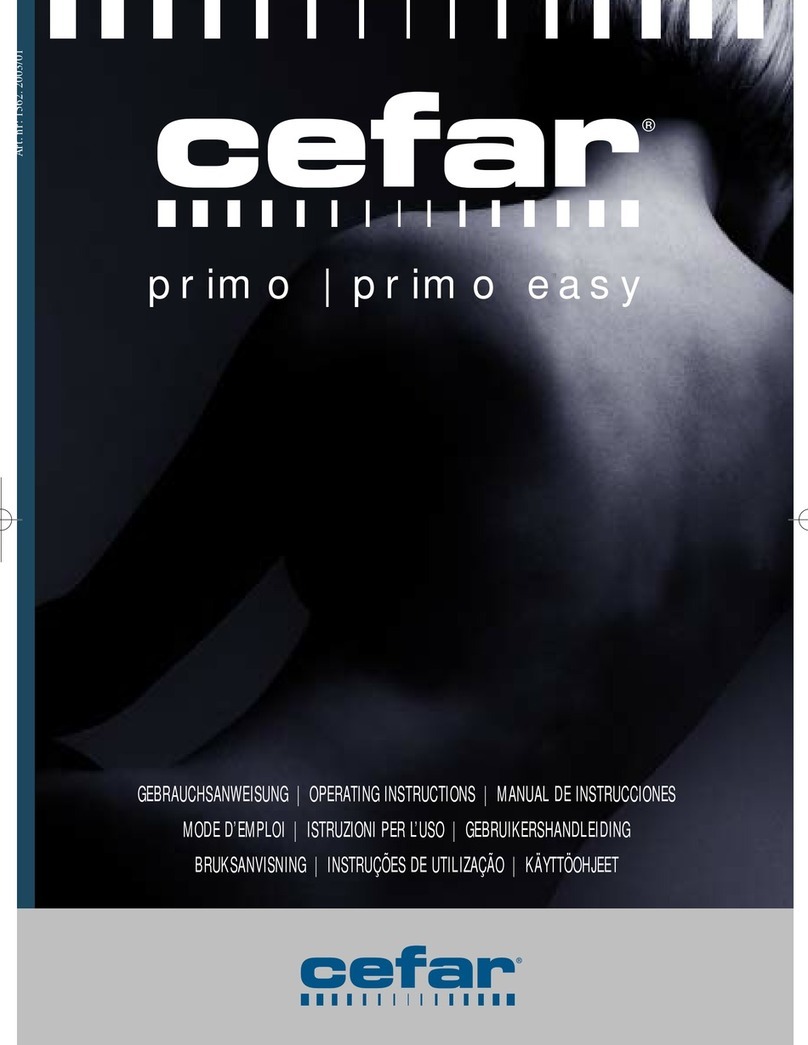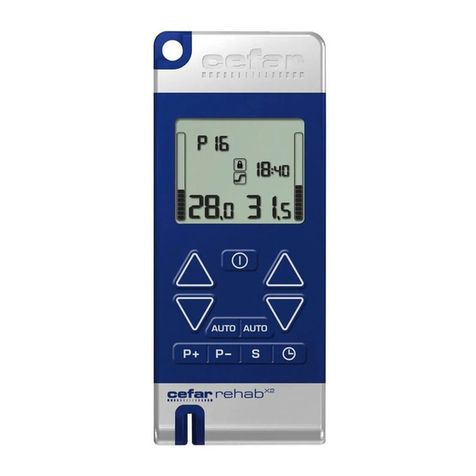
7
GB
7. CARE INSTRUCTIONS
Taking care of and cleaning the CEFAR EASY equipment is simple, provided the following
instructions are observed:
• Keep stimulator and accessories in the
original case when they are not in use. It
may, however, be practical to allow the
electrodes to remain on the body between
treatments. Carbon rubber electrodes can
generally remain for 2–3 hours without the
electrode gel drying out (does not apply to
adhesive gel). They must then be taken off,
washed, and dried before being applied
again. This is especially important for per-
sons with sensitive skin. In connection
with stimulation, make sure that the elec-
trodes are firmly in place.
• When using carbon rubber electrodes, use
plenty of electrode gel and avoid drying
out by applying tape around all the edges
of the electrodes. Rinse the carbon rubber
electrodes and the skin with water after
use. Do not use detergent for the elec-
trodes.
• Self-adhesive multi-use electrodes are re-
moistened if necessary with a few drops
of water and kept air-tight (in a plastic
bag) on protective paper when they are
not in use.
• Never expose the stimulator to water.
Wipe it off with a damp cloth if necessary.
• Do not jerk cables or connections.
• The cables are best preserved if left at-
tached to the stimulator between sessions.
• No other maintenance of the device is re-
quired. Service life of the device can vary
depending on usage conditions. Typical
service life ifs 7 years.
• Never service the device while in use.
• The device should be operated in tempera-
tures between 10°C and 40°C, atmospher-
ic pressures between 50 and 106 kPa, and
relative humidity between 30% and 75%.
• The device should be transported and
stored in temperatures between -40 °C
and 70 °C, atmospheric pressures between
50 and 106 kPa and relative humidity be-
tween 10% and 90%.
• Contact manufacturer for assistance in
setting up, using or maintaining the equip-
ment or report events































